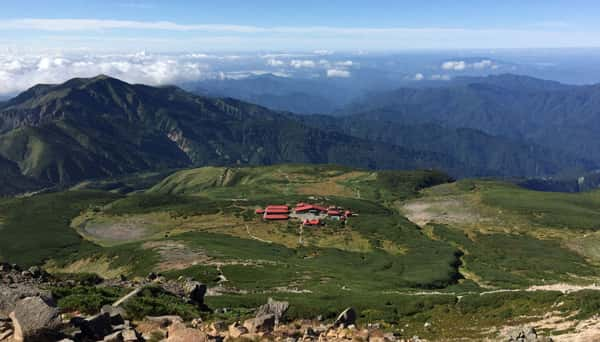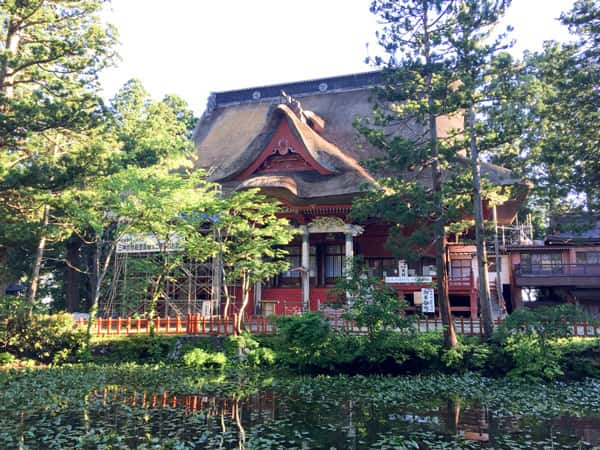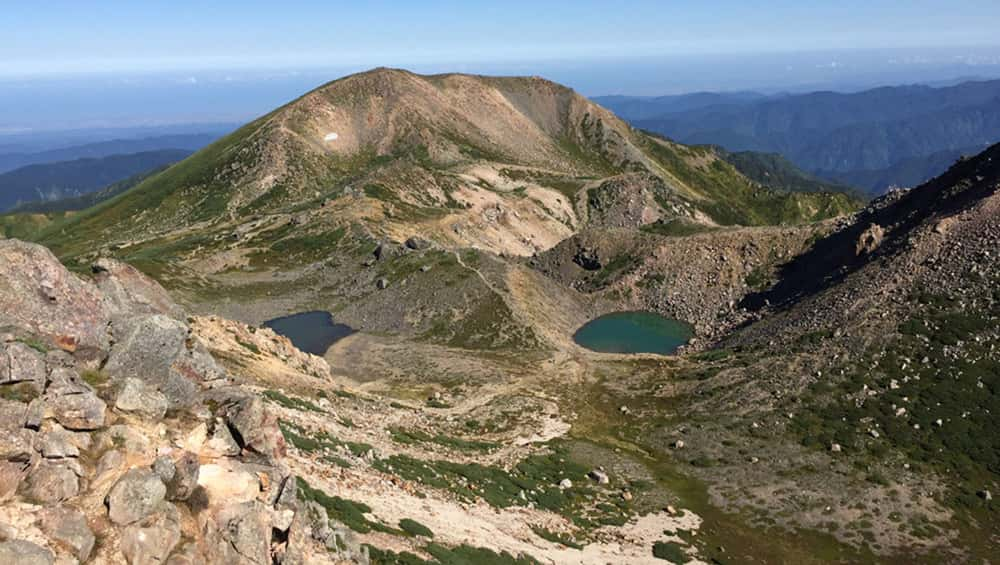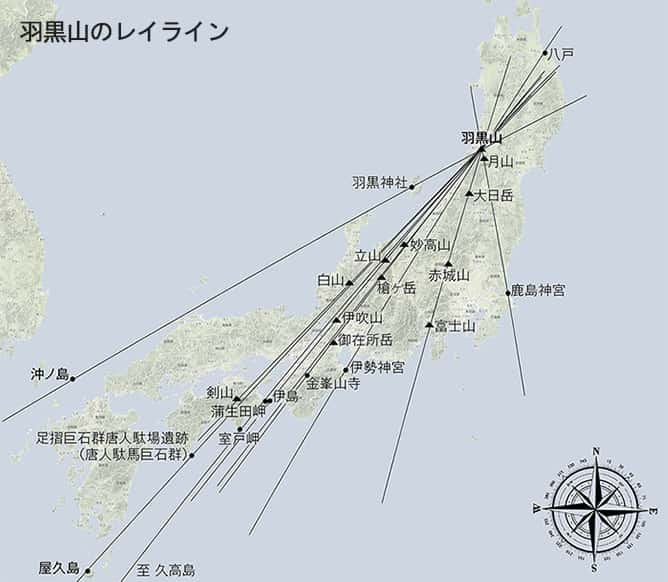Reihou Hakusan
The highest peak in Ishikawa Prefecture Hakusan is 2,702 meters above sea level. Like Tateyama, the entire mountain of Hakusan has long been the object of mountain worship. The three deity pillars of Hakusan include Izanagi-no-mikoto, Izanami-no-mikoto and Kukuri-hime-no-mikoto. Today, there are some 3,000 Hakusan shrines erected all over Japan.
It’s not difficult to imagine that Hakusan has been known by early explorers who found the islands since Japan’s national birth. This is because if you sail the Sea of Japan towards the direction of Hokuriku, you will surely see Hakusan in the distance on a clear day when the air is clear and the weather is beautiful.
Hakusan and Emperor Sojin

A Spectacular View from
the Top of Hakusan beyond MurodoHakusan started gaining recognition during the reign of Emperor Sujin. A sacred site was designated on Hakusan around 91 B.C. where a shrine was built and the mountain came to be revered by the people living around there. The reign of Emperor Sojin was a time of national upheaval, and the Motoise progression was about to begin. The spread of Hakusan worship at this critical time laid the foundation for the mountain of Hakusan to become a mecca for Shugendo.
Hakusan was officially established as a sacred mountain during the Nara period (710-794 CE) by the famous ascetic Taichō. Hakusan was known to many ascetic practitioners as the Mecca of Shugendo, and Hakusan worship became a symbol of Shugendo after the spiritual practice started to become organized into religion. As a result, the religion Hakusan Shugen grew to become a force of power after Kumano Shugen, and became the basis of mountain worship that many ascetic practitioners were seeking.
Mt. Tsukuba, Tsurugisan, and Hagurosan on Hakusan Ley Lines
The ley lines of Hakusan are much more simple compared to those of Tateyama. Nevertheless, as shown in the image below, anyone can see that the ley lines are connected to other reizan in the sense that they share the power of the earth. First of all, it is an extremely important fact that Hakusan is located at the same latitude as one of the 8 Japanese reizan, Mt. Tsukuba. 
Sanjingu Gosai-den, the main shrine
on top of HagurosanMt. Tsukuba can be seen directly in the east, which means that Hakusan can likewise be seen directly in the west from Mt. Tsukuba. The fact that the sacred mountains are located on the same latitudinal line not only allows for mutual veneration, but in ancient times it was probably believed that the power of the earth was shared. Also, another thing that needs to be mentioned from the 8 Reizan of Japan is that the ley line connecting Tsurugisan and Hagurosan is also connected to Hakusan. Hagurosan is one of the three Mountains of Dewa Sanzan, and in the east lies Gassan,a renowned reizan in northeast Japan. Thus, it is thought that through Hagurosan, Hakusan is also connected to Mt. Tsurugi. Thus, Hakusan has been respected by countless people for over a thousand years. And so, Hakusan is a fitting member of the Eight Sacred Mountains of Japan.


